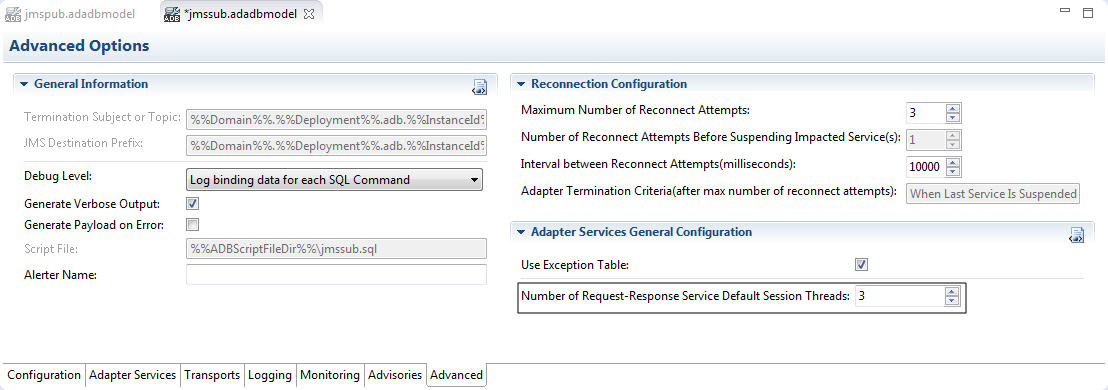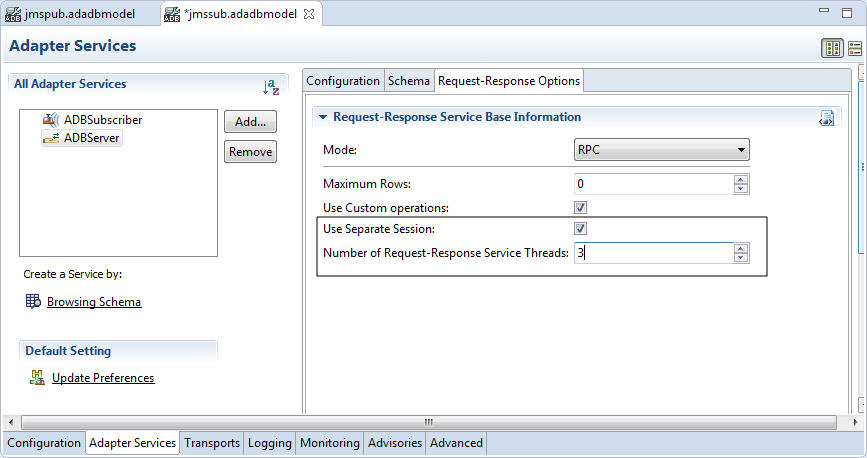Multithreading and Session in Request-Response Service
Since for Request-Response Service, multithreading can be configured at both the adapter configuration level and the service level, the configurations at different levels decide the sessions to be used for Request-Response Service.
Specifically, the use of the default session or a separate session depends on the following conditions:
- Default Session
- If multithreading is configured at the adapter configuration level, Request-Response Service services with the same transport type share the default session to process requests and return the results in response to the client no matter how many services exist in the adapter configuration.
The following figure shows an example of the default session configuration:
- Separate Session
- If multithreading is configured at the service level, each service of Request-Response Service holds a separate session with multiple threads that process requests and returns the results in a response to the client separately.
The following figure shows an example of the separate session configuration:
Copyright © Cloud Software Group, Inc. All rights reserved.


